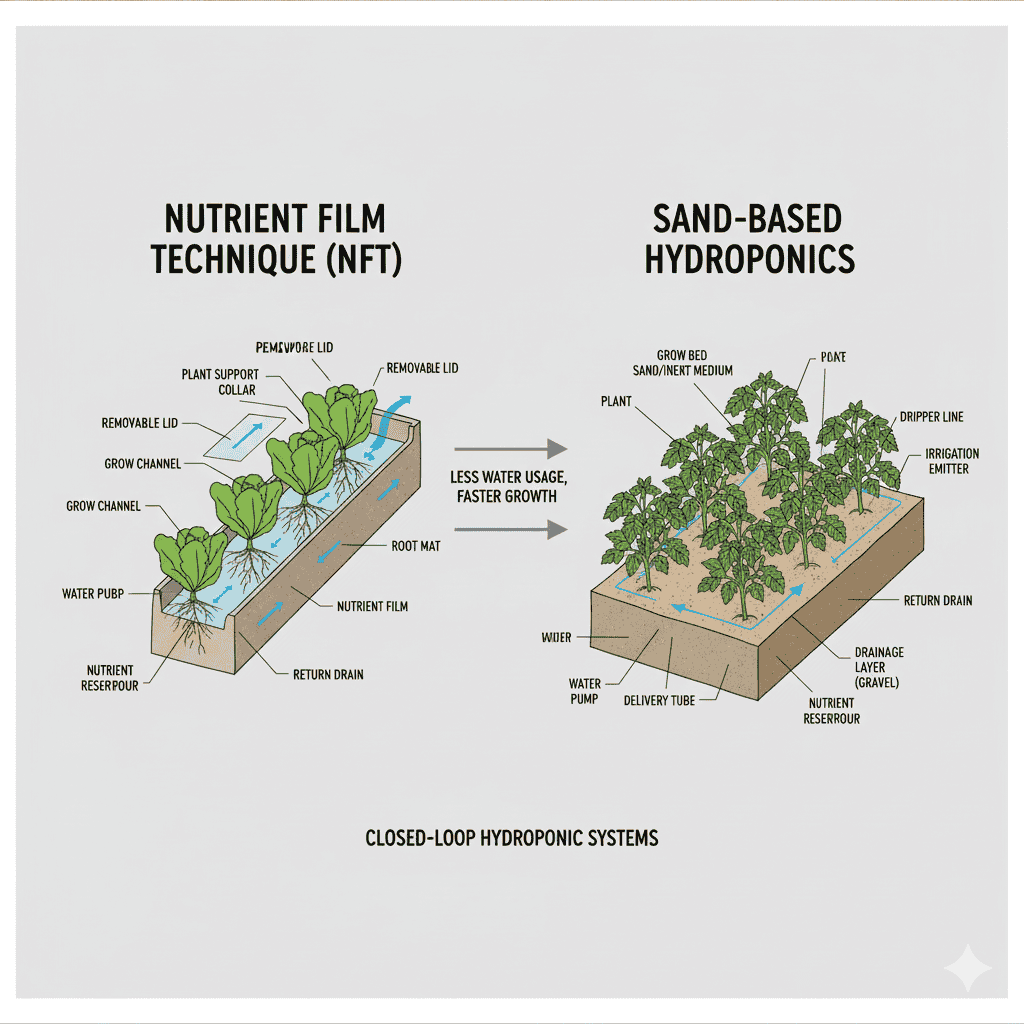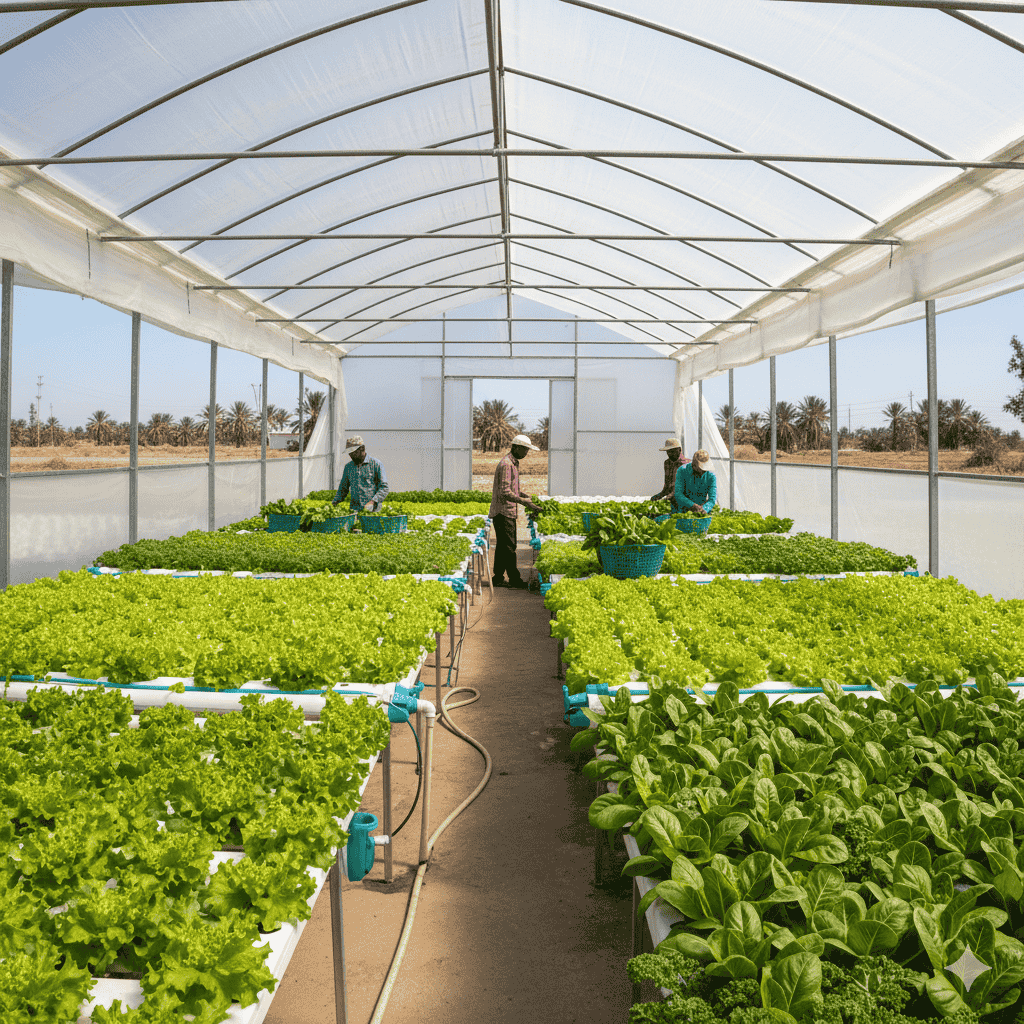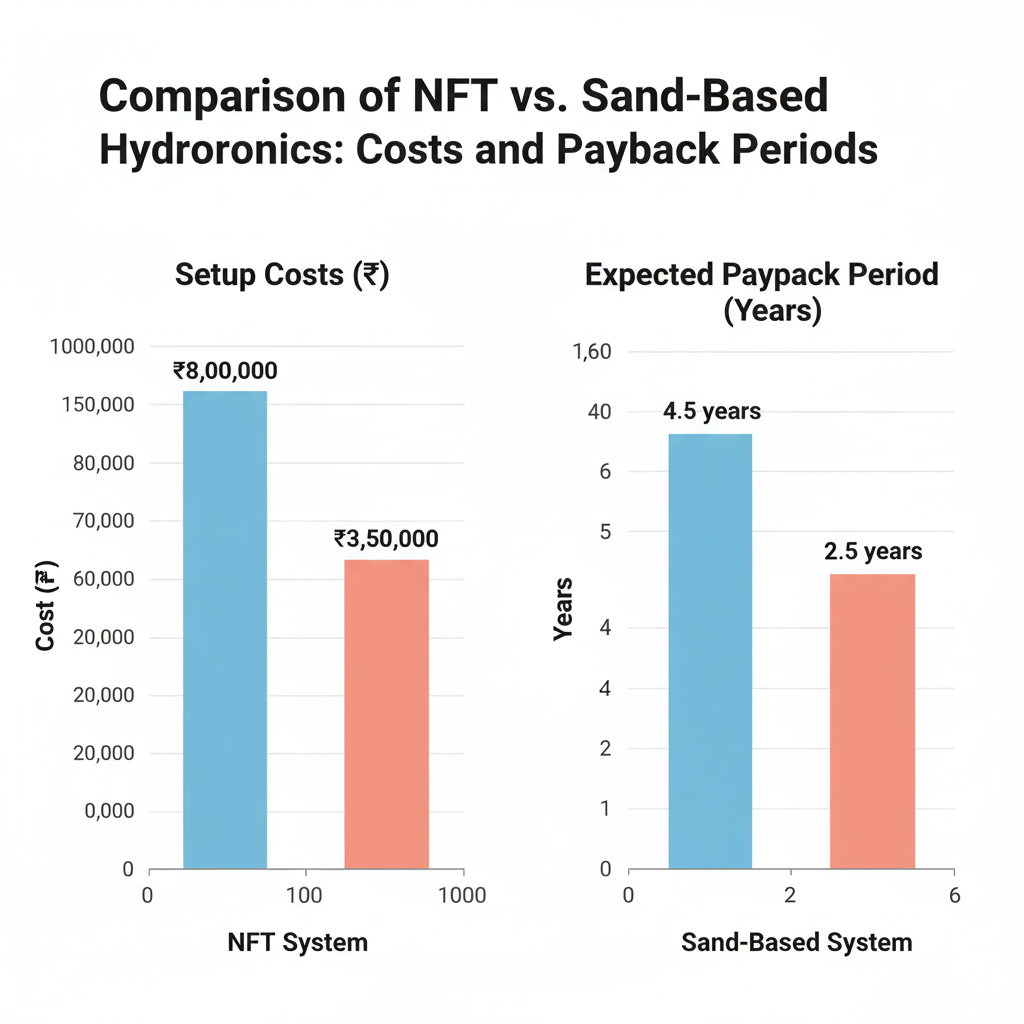Greenhouse Hydroponics: A Smart Future for Indian Small Farmers
Agriculture is the backbone of India’s economy, with nearly 46% of our population depending on farming for their livelihood. However, many small farmers face problems like unpredictable weather, low crop yields, and rising input costs.
To solve these challenges, hydroponics—a modern method of growing plants without soil—has become very popular in India. In this blog, I will discuss a case study of a small farm that wants to set up a greenhouse-based hydroponics system using sand substrate, as an alternative to the Nutrient Film Technique (NFT), which is more expensive.
Why This Case Study is Important
The study is set in Maharashtra, India, where agriculture is vital, but farmers often grow only one or two crops. By adding greenhouse hydroponics, small farmers can diversify their production, grow high-value vegetables like lettuce, spinach, and strawberries, and earn more money while saving water.
Goal of the Study: To check if investing in a sand-based hydroponics greenhouse is economically feasible for a small family farm.
What is Hydroponics?
Hydroponics is a soilless farming method where plants grow in nutrient-rich water or sand. Two common types are:
- NFT (Nutrient Film Technique):
Water with nutrients flows over the plant roots.
- Pro: Efficient and clean.
- Con: Very costly to install and maintain.
- Substrate-Based Hydroponics: Plants grow in sand or cocopean, with nutrients delivered through pipes or drip systems.
-
- Pro: Cheaper, easier for small farmers.
- Con: Slightly lower yield compared to NFT.
 Closed Loop Hydroponic Systems
Closed Loop Hydroponic Systems
Methods Used to Check Profitability
The farmer and researchers used financial analysis tools to decide whether to invest. Here are the techniques they used, explained simply:
|
Technique |
Meaning (Simple Explanation) |
|
NPV (Net Present Value) |
Total profit after considering today’s money value. If NPV > 0, the project is profitable. |
|
IRR (Internal Rate of Return) |
The expected annual return rate on the investment. Higher IRR = better project. |
|
MIRR (Modified IRR) |
A more realistic version of IRR that includes reinvestment rates. |
|
C/B Ratio (Cost-Benefit Ratio) |
Compares total benefits to total costs. If > 1, the project is good. |
|
PI (Profitability Index) |
Shows how much return you get for each rupee invested. |
|
EAV (Equivalent Annual Value) |
Converts the project’s value into annual figures for comparison. |
|
DP (Discounted Payback Period) |
Time needed to recover the initial investment after adjusting for inflation. |
The minimum acceptable return rate was set at 10.25% per year, which is realistic for a developing country like India.
Key Findings
The results showed that sand-based hydroponics in a greenhouse is economically viable for small farmers in India.
- NPV was positive, meaning the project earns more than it costs.
- IRR was higher than 10.25%, so it beats the minimum required return rate.
- The payback period was shorter than expected, showing quick recovery of investment.
- Even under risk and uncertainty—like droughts, market fluctuations, or rising costs—the project remained sustainable.
Why This Matters for India
- Water Saving: Hydroponics uses up to 90% less water than traditional farming. This is vital for drought-prone states like Maharashtra, Rajasthan, and Telangana.
- Higher Yields: Crops grow faster and healthier in controlled greenhouse environments. Example: Lettuce can be harvested in 30 days instead of 60.
- Better Income for Small Farmers: Farmers can grow exotic vegetables like broccoli, kale, or strawberries, which sell at premium prices in urban markets.
- Climate Control: Greenhouses protect crops from pests, floods, and erratic weather, giving stable production year-round.
 Indian Greenhouse with Hydroponic Crop
Indian Greenhouse with Hydroponic Crop
Simple Numbers: Comparing NFT vs. Sand Hydroponics
|
Factor |
NFT System |
Sand-Based System |
|
Initial Cost (₹) |
₹8,00,000 |
₹3,50,000 |
|
Water Usage |
High efficiency |
Moderate efficiency |
|
Ease of Use |
Complex |
Simple |
|
Suitability for Small Farms |
Low |
High |
|
Expected Payback Period |
4-5 years |
2-3 years |
 Comparison between the Setup Costs & Payback
Comparison between the Setup Costs & Payback
Conclusion
This case study proves that hydroponics using sand substrate in greenhouses can change the future of small-scale farming in India. It is affordable, profitable, and eco-friendly, giving farmers the chance to earn more while using fewer resources.
If more farmers adopt this model, India can move toward sustainable agriculture, better food security, and higher rural incomes.
🌱 Investing in modern farming is not just about crops – it’s about building a better future for our farmers and our country.
References
- Chand, R., & Parappurathu, S. (2012). Trends in Agricultural Growth and Productivity in India.
- Ministry of Agriculture & Farmers Welfare, Govt. of India (2023).
- FAO (Food and Agriculture Organization). Hydroponics: A Practical Guide for Indian Farmers.
- Gulati, A., Bathla, S. (2002). Capital Formation in Indian Agriculture.
- National Bank for Agriculture and Rural Development (NABARD), Hydroponics Reports (2024).

